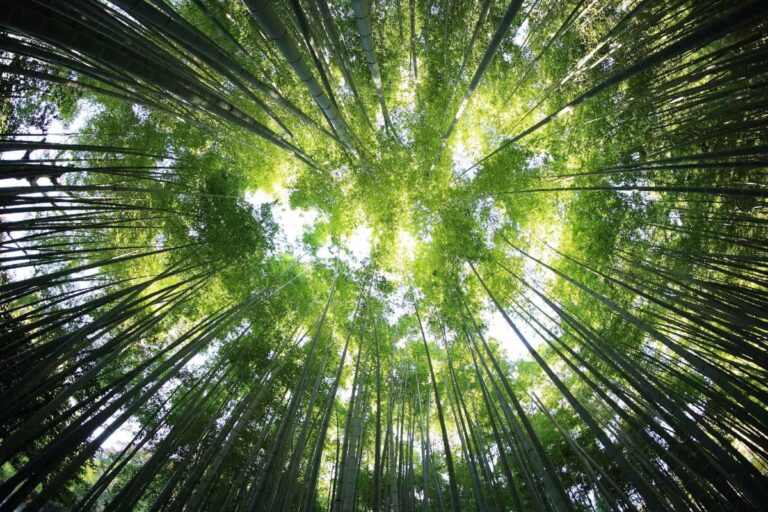Forests encompass 31% of the Earth’s surface and are an extremely vital ecosystem. They are crucial to the survival of countless kinds of plants and animals, many of which are now under danger.
Deforestation and forest degradation have left many of these forests in tatters and in grave danger. There is a plethora of justifications for preserving our forests. In addition to being essential to our survival as a source of oxygen, trees play an important role in preserving biodiversity, slowing climate change, and delivering a variety of other benefits to people and animals.
In this article, we will look into the seven largest forests in the world and delve into the ecological benefits they offer.
Table of Contents
The 7 largest forests in the world
1. The Amazon rainforest
The Amazon Rainforest is the world’s biggest tropical rainforest, stretching across South America across a massive area of over 5.5 million square kilometers. Its geographic range includes the countries of Suriname, Brazil, Venezuela, Bolivia, Peru, Colombia, Guyana, Ecuador, and French Guiana.
The Amazon Rainforest is often called the “lungs of the Earth” because of the vital function it plays in oxygen production for the entire planet. There are 400 billion trees there, and they help mitigate climate change by soaking up carbon dioxide.
Furthermore, it is home to a remarkable variety of plant and animal species. Thus increasing global biodiversity and offering important medicinal herbs for the advancement of pharmaceutical science.
2. The Congo Basin rainforests
The Congo Basin, in Central Africa, is home to the world’s second-largest rainforest at over 3 million km2. Congo Basin, which includes five unique national parks, is protected since it is a UNESCO World Heritage Site. It is sometimes referred to as Earth’s “second lung” after the Amazon.
This forest is an important part of the global climate regulation system because it acts as a carbon sink, removing carbon dioxide from the air. Not only that, but it’s also home to some critically endangered animals including western lowland gorillas, forest elephants, and bonobos.
Fishing, farming, and traditional medicine are just some of the ways that millions of people who live in and near the Congo Basin’s forests make a living.
3. The Taiga
Taiga is the biggest terrestrial biome, spanning huge portions of Canada, Russia, Scandinavian, and Alaska. It is also known as the Boreal Forest and the Snow Forest. This forest, covering an area of around 11 million km2, is home to coniferous trees like spruce, fir, and pine, and experiences cold, brutal winters.
Significant volumes of carbon dioxide are removed from the air and stored in the Taiga. The Siberian tiger, the lynx, and the brown bear all call this region home. The forest’s ability to filter water is an important factor in preserving the integrity of our freshwater supplies.
4. The Valdivian temperate rainforest
The Valdivian Temperate Rainforest, straddling the southern borders of Chile and Argentina, is one of the most extraordinary forests on the planet.
The area it covers is only about 248,000 square kilometers, which is modest compared to other forests. However, its extraordinary biodiversity makes up for its small size.
Numerous endemic species reside in this forest, such as the Pudu (the smallest deer in the world) and Darwin’s Frog. The Valdivian Temperate Rainforest controls water flow, stops soil from eroding, and provides drinking water to the area.
5. The Tongass national rainforests
It is the largest national forest in the United States, and it’s a temperate rainforest that’s home to a wide variety of plants and animals that are at risk of extinction. More than 75,000 people rely on the mountains, glaciers, and islands, etc. that make up the Tongass National Forest for their survival.
A wide variety of other animals, including the world’s largest population of bald eagles, can be found there, too. Including moose, brown bears, porpoises, mountain goats, humpback whales, killer whales, sea otters, fur seals, black bears, and wolves.
6 The Indian Sundarbans
The Sundarbans are the biggest mangrove forest in the world, spanning around 10,000 square kilometers across the delta of the Ganges, which is shared by Bangladesh and India.
This special forest ecosystem serves as a barrier, preventing flooding and cyclone damage to the coast.
The Sundarbans are home to a wide variety of wildlife. Including the Bengal tiger, the saltwater crocodile, and countless bird species. In addition, it absorbs a lot of carbon dioxide and serves as a natural carbon sink.
7. The Daintree rainforest
Daintree Rainforest in Australia is one of the oldest forests on Earth. And it was named after the Australian photographer and geologist Richard Daintree. Its age is debated, although estimates put it at 180 million years old, making it older than the Amazon jungle.
Daintree, which covers an area of 463 square miles, is home to more than half of Australia’s bat and butterfly species, making it an essential pollinator for the surrounding area.
The Daintree Rainforest is a UNESCO World Heritage Site because of its stunningly gorgeous canopy and vines, as well as its forested slopes and valleys. Tourists come from all over the world to visit this massive forest because it is both beautiful and historically significant.
A healthier future for humans and the environment
The largest forests on Earth have a critical role to play in maintaining Earth’s ecosystem. They aid with the storage of carbon, oxygen production, biodiversity preservation, climate management, and disaster mitigation, among other important ecological services.
A better future for us and the environment depends on our keeping these forests around and managing them sustainably. Therefore it’s important that we all understand the value they provide.
Read also: What is afforestation: planting trees on a large scale for a sustainable tomorrow












